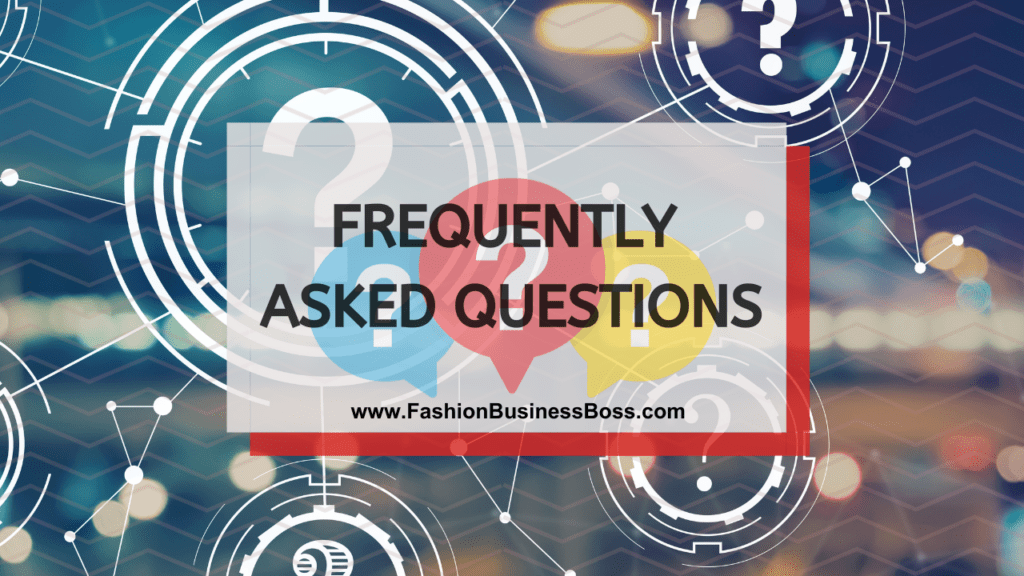Launching a clothing brand is a dream for many. However, it’s crucial to have a clear understanding of the financial commitment it entails.
To create a clothing brand, costs vary widely. Expect expenses for research, design, manufacturing, marketing, inventory, legalities, and quality control. Budget wisely for your fashion dream.
In this article, we’ll break down the costs involved in creating your own clothing brand, from initial concept to the first collection hitting the racks.
Research and Planning

Starting a clothing brand requires careful thought and preparation. Before jumping into the fashion industry, it’s crucial to conduct thorough research. This means taking the time to learn about your potential customers, your competition, and what’s currently happening in the fashion world.
The research phase involves finding out who might be interested in your clothing, what similar brands are doing, and identifying any opportunities that others may have missed. To do this, you’ll need to allocate a small portion of your budget, about 5%, specifically for market research.
Market research is about understanding the people who might buy your clothes. You’ll want to know their preferences, what they like, and what they don’t. You’ll also want to see where there might be gaps in the market – things that people want but can’t easily find.
Think of research and planning as the foundation of your clothing brand. It helps you build a solid understanding of your potential customers and how to meet their needs.
Read more about: Clothing Brand Magic: Designing with Passion
Branding and Design
Building a recognizable and appealing brand identity is essential when starting a clothing brand. This identity encompasses various elements, such as designing an engaging logo, crafting distinctive labels, and shaping a unique brand narrative that resonates with your target audience.
Within your budget, it’s wise to set aside 15% specifically for branding and design-related expenses. This allocation ensures that you have the necessary funds to create a strong visual and narrative identity for your brand.
Design expenses may encompass hiring a professional graphic designer or investing in design software if you possess design skills. If you plan to register your brand’s name or logo as a trademark, you should account for the associated registration fees.
Think of branding and design as the face and voice of your clothing brand. It’s what sets you apart and communicates your brand’s personality to your potential customers. Allocating 15% of your budget to this aspect ensures that you can establish a memorable and engaging brand identity right from the start.
Manufacturing
Creating your clothing line is a major financial commitment when establishing a clothing brand. The costs involved in this phase can fluctuate significantly, primarily based on three key factors: the quality of the fabric you use, the number of clothing pieces you intend to produce, and where you choose to manufacture them.
Within your budget, it’s vital to allocate a substantial portion, ranging from 30% to 40%, exclusively for manufacturing-related expenses. This allocation accounts for the significant investment required to bring your clothing designs to life.
Manufacturing expenses encompass several elements, including sourcing the fabric materials needed for your clothing, creating patterns for your designs, producing initial samples to assess quality and fit, and the actual large-scale production process.
If you source materials or carry out manufacturing overseas, you should factor in shipping expenses and any costs associated with import/export procedures.
Manufacturing is where your clothing ideas become tangible products. Allocating 30-40% of your budget for this phase ensures that you have the financial resources necessary to produce your clothing line in the quantity and quality you envision.
Marketing and Promotion

Effective promotion is a crucial element of launching a clothing brand. This involves spreading the word about your brand, attracting potential customers, and building a loyal following. To achieve this, you must allocate a portion of your budget, approximately 10-15%, specifically for marketing and promotion activities.
Marketing and promotion encompass various aspects, such as establishing a user-friendly website to showcase your clothing line and creating social media accounts to engage with your target audience. These digital platforms serve as your storefront and communication channels with potential customers.
Budgeting for this phase should include expenses related to photography for high-quality product images, web design to ensure a professional online presence, advertising to reach a broader audience, and potential collaborations with influencers or brand ambassadors to enhance your brand’s visibility.
Marketing and promotion are about letting people know your clothing brand exists and why they should be interested in it. Allocating 10-15% of your budget to these efforts ensures that you can effectively reach and engage your potential customers, ultimately driving interest in your clothing brand.
Read more about: Clothing Brand Launch: What You Need to Know About Finances
Inventory
Managing inventory is a substantial financial aspect when establishing a clothing brand. This process involves acquiring and storing the clothing items you intend to sell to your customers. The amount you allocate to this part of your budget, approximately 10-15%, is crucial for maintaining a healthy balance between supply and demand.
The cost of purchasing your initial inventory depends on various factors, including the size of your clothing collection and the number of different styles you plan to offer. It’s essential to plan this aspect of your budget thoughtfully because having too much inventory on hand can tie up your available capital.
Think of inventory as the clothing items you have available to sell. Allocating 10-15% of your budget to this aspect ensures that you have enough clothing products to meet customer demand without overburdening your finances. Balancing your inventory effectively is key to keeping your clothing brand financially sound.
E-commerce Platform and Retail Space
When setting up your clothing brand, it’s essential to consider where and how you’ll sell your products. If you plan to sell online, allocate a portion of your budget, typically around 5-10%, for your e-commerce platform and associated costs.
An e-commerce platform is like a digital storefront where customers can browse and purchase your clothing items. Budgeting for this aspect covers expenses related to website development, hosting, and payment processing fees.
Alternatively, if you intend to have physical retail stores, you’ll need to budget for expenses such as rent for the space, utilities like electricity and water, and the decoration of the store to create an inviting shopping environment.
Your budget allocation for e-commerce or retail space ensures you have the necessary funds to create a place for customers to discover and buy your clothing. Some brands choose a mix of both online and offline sales to reach a wider audience, allowing customers to shop in a way that suits them best. Allocating 5-10% of your budget to this area ensures your brand’s accessibility to potential customers.
Legal and Licensing (Budget Allocation: 5%)

When you embark on creating a clothing brand, it’s crucial to ensure that you are legally compliant. To do this, allocate a portion of your budget, typically around 5%, for legal and licensing considerations.
Legal and licensing expenses cover various aspects, including obtaining the necessary business licenses and permits, which allow you to legally operate your clothing brand. These requirements can vary depending on your location and the nature of your business activities.
Furthermore, it’s essential to budget for potential legal consultations. These consultations may be necessary to navigate complex legal issues, protect your intellectual property, or resolve any legal disputes that may arise.
Think of legal and licensing expenses as the steps you take to ensure that your clothing brand operates within the boundaries of the law. This includes acquiring the necessary permits and licenses and seeking legal guidance when needed. Allocating 5% of your budget to this area ensures that you remain compliant with the law while protecting your brand’s rights and interests.
Read more about: Clothing Apparel Business Plan: Charting Fashion’s Future
Contingency Fund (Budget Allocation: 5-10%)
In the world of business, unexpected expenses can arise at any time. That’s why it’s wise to allocate a portion of your budget, typically around 5-10%, to create a contingency fund.
A contingency fund acts as a safety net for your clothing brand. It’s like having extra money set aside for emergencies or unforeseen challenges. These unexpected expenses could include sudden repairs, unexpected increases in production costs, or economic downturns that affect your sales.
Having a contingency fund ensures that your brand remains resilient and can weather unexpected storms. It provides you with the financial flexibility to handle these challenges without jeopardizing the core operations of your business.
Think of the contingency fund as a financial cushion. It’s there to catch you if you stumble unexpectedly. Allocating 5-10% of your budget to this fund is a smart financial strategy that allows your clothing brand to adapt and overcome unforeseen obstacles, helping you maintain stability and continuity in your business operations.
Quality Control and Testing (Budget Allocation: 5%)
In the world of fashion, maintaining high-quality standards is an absolute necessity. This means setting aside a portion of your budget, typically around 5%, for quality control and testing processes.
Quality control and testing are the steps you take to ensure that the clothing items you produce meet the highest standards. This includes inspecting the fabrics you use to make sure they are durable and won’t wear out quickly. It also involves checking that your clothing sizes are accurate so that customers get what they expect when they order from your brand.
Moreover, conducting wear tests is essential. This means having people actually wear your clothing to see how comfortable it is and how well it holds up over time. These efforts are crucial for building trust with your customers and avoiding situations where you might have to deal with returns or recalls, which can be expensive and damaging to your brand’s reputation.
Think of quality control and testing as your way of making sure your clothing is the best it can be. Allocating 5% of your budget to this aspect is an investment in your brand’s reputation and customer satisfaction. It helps you avoid costly problems down the road by ensuring that your products meet the highest quality standards.
Conclusion
In the world of fashion, creating a clothing brand is a thrilling journey that demands careful financial planning. By understanding the costs involved and budgeting accordingly, you can take your passion for fashion and turn it into a thriving brand. Remember, while the initial investment may seem daunting, the potential rewards in terms of creativity and entrepreneurship can be truly fulfilling.
Frequently Asked Questions

Q: What are the primary expenses involved in launching a clothing brand?
A: The main expenses include manufacturing, branding, marketing, inventory, legal and licensing fees, and quality control.
Q: How can I estimate the initial manufacturing costs for my clothing line?
A: To estimate manufacturing costs, consider factors like fabric quality, production volume, and location. Request quotes from manufacturers for a more accurate figure.
Q: Is it necessary to have a physical retail space as well as an online presence?
A: Having a physical retail space is not mandatory, but it depends on your target market. Many brands excel solely online, while others benefit from a mix of online and offline sales.
Q: What legal aspects should I be aware of when starting a clothing brand?
A: Be aware of business licenses, permits, copyright issues, and potential trademark registration. Consulting with a legal professional is advisable.
Q: How can I ensure the quality of my clothing products and minimize returns?
A: Implement quality control processes, including fabric inspections, sizing accuracy checks, and wear tests. Maintaining high product quality builds customer trust and reduces return rates.
To learn more about starting your own clothing business, check out my startup documents here.
Please note that the contents of this blog are for informational and entertainment purposes only and should not be construed as legal advice. Any action taken based on the information provided in this blog is solely at your own risk. Additionally, all images used in this blog are generated under the CC0 license of Creative Commons, which means they are free to use for any purpose without attribution.

Meet Shawn Chun: Entrepreneur and Fashion Business Fan.
I’m a happy individual who happens to be an entrepreneur. I have owned several types of businesses in my life from a coffee shop to an import and export business to an online review business plus a few more and now I create online resources for those interested in starting new ventures. It’s demanding work but I love it. I do it for those passionate about their business and their goals. That’s why when I meet a designer or boutique owner at a craft fair, farmers market, retail location or anywhere else I see myself. I know how hard the struggle is to retain clients, find good employees and keep the business growing all while trying to stay competitive.
That’s why I created Fashion Business Boss: I want to help fashion business owners like you build a thriving business that brings you endless joy and supports your ideal lifestyle.

